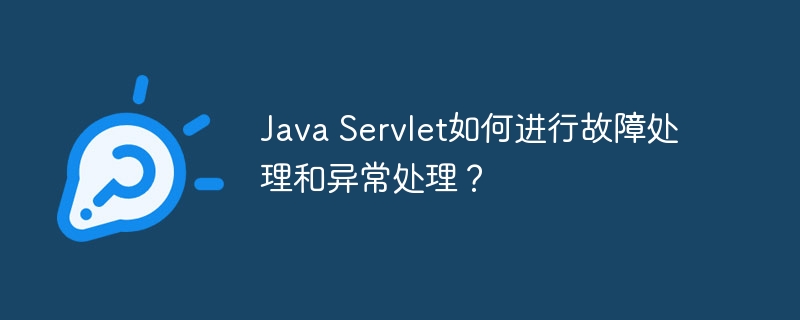
Fault handling and exception handling in Java Servlets help applications handle error conditions. Fault handling involves detecting and handling errors using try-catch blocks or the throws keyword. Exception handling involves handling the actual exceptions that are thrown, including RuntimeException and CheckedException. Best practices include catching only handleable exceptions, using specific exception types, and following the DRY principle.

Fault Handling and Exception Handling in Java Servlets
Introduction
In Fault handling and exception handling are crucial when developing Java Servlet applications as it helps the application handle error conditions and provide a robust system. This tutorial will introduce fault handling and exception handling techniques in Java Servlets.
Troubleshooting
Fault handling involves detecting and handling error conditions in the code. In Servlet, you can use the following methods for fault handling:
Practical case
The following is an example of using try-catch block for fault handling:
try {
// 执行可能会抛出异常的代码
} catch (Exception e) {
// 处理异常
}Exception handling
Exception handling refers to handling exceptions actually thrown in the code. In Servlets, exceptions can be of the following types:
NullPointerException and IndexOutOfBoundsException. IOException and SQLException. Practical case
The following is an example of using exception handling:
public void doPost(HttpServletRequest request, HttpServletResponse response) {
try {
// ...
} catch (IOException e) {
// 处理 IOException 异常
} catch (SQLException e) {
// 处理 SQLException 异常
}
}Best Practice
Exception type. The above is the detailed content of How does Java Servlet perform fault handling and exception handling?. For more information, please follow other related articles on the PHP Chinese website!
 What does apache mean?
What does apache mean?
 apache startup failed
apache startup failed
 How to save programs written in pycharm
How to save programs written in pycharm
 The difference between static web pages and dynamic web pages
The difference between static web pages and dynamic web pages
 How to unlock android permission restrictions
How to unlock android permission restrictions
 Representation method of string constant
Representation method of string constant
 How to retain the number of decimal places in C++
How to retain the number of decimal places in C++
 Usage of get function in c language
Usage of get function in c language




